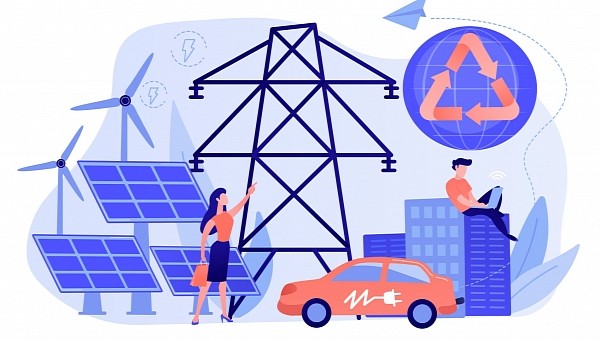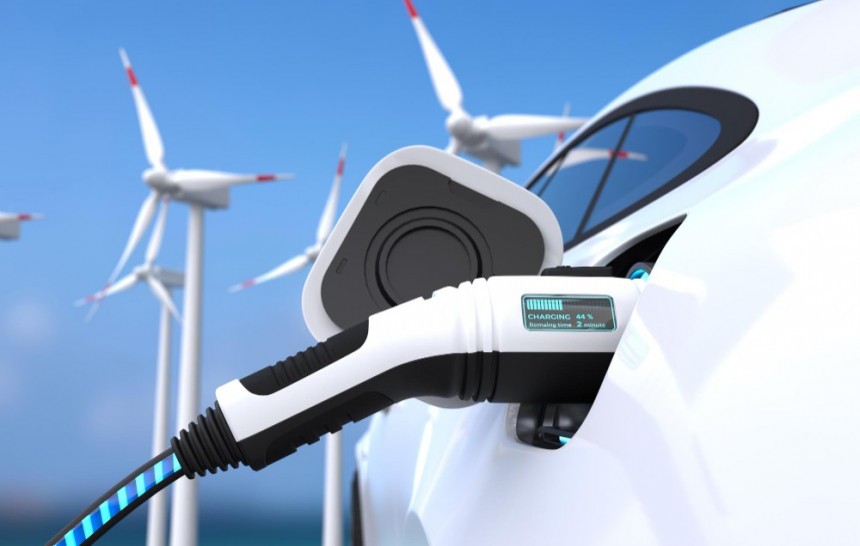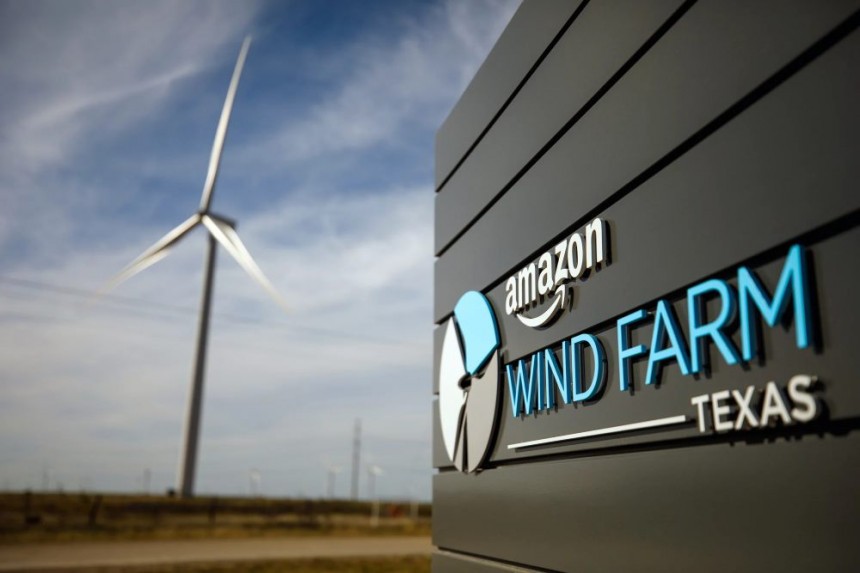This year's beginning is sort of bad news for the oil industry. Two studies forecast a rapid increase in renewables share in the global energy mix. More than many research companies predicted in the last years. Signs of a big change are there, but maybe we can’t see the forest for the trees.
The International Energy Agency (IEA) released the “Electricity Market Report 2023” in the first part of February. This is an analysis of recent policies, trends, and market developments. Based on this, IEA forecasts the evolution of electricity demand, supply, and CO2 emissions through 2025.
The first conclusion is that the world’s growing demand for electricity is set to accelerate until 2025. Over the next three years, IEA expects the surplus needs to be around 2 TWh. To put it into context, this is twice Japan’s current electricity consumption.
More than 70% of the increase is expected from China, India, and Southeast Asia. Past decades have shown that these countries heavily relied on fossil fuels to keep up with the fast-growing energy demand. So this could be a warning.
But now, according to IEA Executive Director Fatih Birol, “renewables and nuclear power are growing quickly enough to meet almost all this additional appetite, suggesting we are close to a tipping point for power sector emissions.”
Likewise, in the last decade, China has added an average of 450 TWh of solar energy and 700 TWh of wind energy. In fact, China is the first in the world to have built a wind farm featuring 16 MW offshore wind turbines. Thus, it will discrown Vestas V236-15.0 MW, which is currently the largest wind turbine in the history of mankind.
The new 16 MW offshore wind turbine was built by China Three Gorges Corporation and can produce more than 66 GWh of clean electricity per year. Moreover, CTG is already developing an 18 MW offshore wind turbine prototype, which could be commercially available from 2025 onwards.
The IEA forecasts that the share of renewables will rise from 29% in 2022 to 35% in 2025. The coal- and gas-fired generation share will fall in the global power generation mix.
Over the next three years, 90% of the new global energy supply will come from renewables and nuclear. And China will account for almost half of the growth, but this is no longer a surprise.
Now, ReTHINK Energy has a proven track record, and its predictions are much more reliable. Especially given the analysts’ courage to take the bull by the horns: “at present, there are too many energy models which rely on the idea of ‘primary’ energy and show a ludicrously high value of fossil fuels long into the future.”
They even go further, being bullish about “forecasts from oil companies, IEA, or government quangos with vested interests in oil.” So, it’s no wonder their third edition of the “Annual Primary Electricity” model concludes that “the oil industry has already peaked and will crash and burn very early in the 2030s.”
One of the main reasons is that the transport sector is the end user for half of the oil produced by the behemoth oil industry. Coal is already experiencing a steep decline, and oil companies are favoring natural gas over it.
But the Russia-Ukraine war has led to an unexpected outcome for natural gas: Europe is rapidly giving up expensive natural gas for electricity production. Besides, the new space programs, aimed at monitoring methane emissions, create new pressure on policymakers to end support for natural gas.
It may sound hilarious to think that the oil and gas exploration market, which is valued at almost $5 trillion (€4.6 trillion), will “crash and burn” by the end of this decade. But there are simple explanations favoring this argument.
ReTHINK Energy’s data show that the global car fleet is steadily rising from about 1.2 billion units in 2020 to more than 1.7 billion units in 2050. The global EV fleet penetration is expected to reach 200 million units by 2030, while in 2050, it will be close to 1.5 billion units. So it will account for roughly 90% of the global car fleet.
You won’t find these values in any government agencies or oil companies’ forecasts. This is odd given that the new ICE vehicles phase-out is going to happen in the not-too-distant future, while EVs' growth rate is an average of 60% year-over-year, and it’s expected to grow even more.
The investments are expected to rise ten times more due to the fact that today 90% of EV battery production is based in China. Because of this, the U.S. and other developed countries, especially the European Union, are pushing hard for local sourcing of raw materials and production.
So, electric cars are only the locomotive for the big shift of the energy sector towards renewables. The transition will still see a slight rise in global oil demand until around 2028, when ReTHINK Energy expects the oil industry to reach the point of no return.
It's expected that oil-rich states – dominated by the OPEC cartel – will try to keep oil prices high by limiting the supply, as they always have done. But as the biggest economies will rely less and less on oil and gas, this is expected to only lead to a shrink of the oil market by at least 20% by the beginning of the 2030s.
Oil is currently a big geopolitical driver, so countries that rely on oil sales will struggle, and Russia and Saudi Arabia are predicted to take the biggest hit. This means at least a decade of global political instability, so most countries will be forced to secure their energy needs by investing heavily in renewables, mainly wind and solar.
We have yet to see if such bold or even outrageous claims will take form, but the signs are there. For instance, in 2022, renewables supplied nearly 75% of new U.S. utility-scale generating capacity, while renewable energy sources collectively provided 27.3% of the total available installed generating capacity in the U.S.
It's important to note that new renewables capacity accounted for more than Federal Energy Regulatory Commission (FERC) forecasted three years ago. In fact, the new 2022 addition were DOUBLE what FERC forecasted as “high-probability.” No wonder ReTHINK Energy is bullish about such forecasts…
Also, FERC reported no new coal additions for 2022, although their previous forecast included a dozen of them. It's also important to note that much of the new gas capacity actually replaced old coal power plants that were decommissioned, and the curve of investments in new natural gas facilities is going to plummet over the years.
FERC’s predictions for 2025 are still conservatory, as their “high-probability” scenario is for renewables to account for 33% of the total available installed generating capacity in the US. This is in line with IEA estimates for global renewables in 2025, but there’s a high probability that the pace will accelerate.
In 2022, more than 50 new companies joined the RE100 climate group, which is a global initiative bringing together businesses committed to 100% renewable electricity. Today, there are almost 500 corporations in the RE100, and to date, they purchased an estimated 250 TWh of clean energy.
According to BNEF projections, they’ll need an additional 290 TWh in 2030 to meet their goals. So demand for renewable energy will be even higher. It’s important to note that the top corporate clean energy buyers are big tech firms.
In 2022, Amazon was the absolute leader, with 10.9 GW – more than the next ten companies’ contracts! Still, Meta, Google, and Microsoft have pledged to meet their demand for power at all hours of the day with carbon-free energy, so it’s expected they will catch up with Amazon in the next couple of years.
In the end, it’s crucial to bring into discussion a dangerous trend aimed at oil companies’ dominance: the fossil fuel divestment movement. Until now, it was more of an activism thing. But now California made a big step, as state policymakers recently introduced the California Fossil Fuel Divestment Act (SB 252).
Up to this point, around 80% of S&P 500 companies are reporting direct emissions (scope 1 and scope 2 emissions). But the new climate package bill requires that all large corporations have to report their carbon emissions, including scope 3 – the emissions attributable to supply chains, which can account for up to 90% of total corporations’ carbon emissions.
We expect that several states will follow in California’s footsteps this year, and this means billions of dollars will be divested from fossil fuel investments. Most likely, they will be invested in renewables, and this could disrupt all the forecasts, no matter how conservatory or aggressive.
The first conclusion is that the world’s growing demand for electricity is set to accelerate until 2025. Over the next three years, IEA expects the surplus needs to be around 2 TWh. To put it into context, this is twice Japan’s current electricity consumption.
More than 70% of the increase is expected from China, India, and Southeast Asia. Past decades have shown that these countries heavily relied on fossil fuels to keep up with the fast-growing energy demand. So this could be a warning.
But now, according to IEA Executive Director Fatih Birol, “renewables and nuclear power are growing quickly enough to meet almost all this additional appetite, suggesting we are close to a tipping point for power sector emissions.”
China is the best example of renewable (r)evolution
China is already the world's largest producer of hydroelectricity. Its installed hydropower capacity has more than quadrupled since 2000. Today, hydropower accounts for about 17% of total electric power capacity, and the estimated reached hydropower generation is more than 1,300 TWh.The new 16 MW offshore wind turbine was built by China Three Gorges Corporation and can produce more than 66 GWh of clean electricity per year. Moreover, CTG is already developing an 18 MW offshore wind turbine prototype, which could be commercially available from 2025 onwards.
The IEA forecasts that the share of renewables will rise from 29% in 2022 to 35% in 2025. The coal- and gas-fired generation share will fall in the global power generation mix.
Over the next three years, 90% of the new global energy supply will come from renewables and nuclear. And China will account for almost half of the growth, but this is no longer a surprise.
Maybe near-future looks much better for renewables
While IEA has a rather conservative approach to its forecasts, research company ReTHINK Energy is much more aggressive in its predictions regarding energy mix changes. Some years ago, it had some bold predictions about the rise of renewables and the decline of the oil industry, but many in the industry were skeptical about it.Now, ReTHINK Energy has a proven track record, and its predictions are much more reliable. Especially given the analysts’ courage to take the bull by the horns: “at present, there are too many energy models which rely on the idea of ‘primary’ energy and show a ludicrously high value of fossil fuels long into the future.”
They even go further, being bullish about “forecasts from oil companies, IEA, or government quangos with vested interests in oil.” So, it’s no wonder their third edition of the “Annual Primary Electricity” model concludes that “the oil industry has already peaked and will crash and burn very early in the 2030s.”
One of the main reasons is that the transport sector is the end user for half of the oil produced by the behemoth oil industry. Coal is already experiencing a steep decline, and oil companies are favoring natural gas over it.
But the Russia-Ukraine war has led to an unexpected outcome for natural gas: Europe is rapidly giving up expensive natural gas for electricity production. Besides, the new space programs, aimed at monitoring methane emissions, create new pressure on policymakers to end support for natural gas.
ReTHINK Energy’s data show that the global car fleet is steadily rising from about 1.2 billion units in 2020 to more than 1.7 billion units in 2050. The global EV fleet penetration is expected to reach 200 million units by 2030, while in 2050, it will be close to 1.5 billion units. So it will account for roughly 90% of the global car fleet.
You won’t find these values in any government agencies or oil companies’ forecasts. This is odd given that the new ICE vehicles phase-out is going to happen in the not-too-distant future, while EVs' growth rate is an average of 60% year-over-year, and it’s expected to grow even more.
Electric cars are the main driver for the renewable revolution
For instance, the think-tank Atlas Public Policy shows that, in 2022 alone, the total investments in planned EV battery projects in the U.S. were over $73 billion (€68 billion), which is three times more than in 2021. Up to this point, the total amount of American investments in batteries is about $130 billion (€121 billion).The investments are expected to rise ten times more due to the fact that today 90% of EV battery production is based in China. Because of this, the U.S. and other developed countries, especially the European Union, are pushing hard for local sourcing of raw materials and production.
So, electric cars are only the locomotive for the big shift of the energy sector towards renewables. The transition will still see a slight rise in global oil demand until around 2028, when ReTHINK Energy expects the oil industry to reach the point of no return.
It's expected that oil-rich states – dominated by the OPEC cartel – will try to keep oil prices high by limiting the supply, as they always have done. But as the biggest economies will rely less and less on oil and gas, this is expected to only lead to a shrink of the oil market by at least 20% by the beginning of the 2030s.
We have yet to see if such bold or even outrageous claims will take form, but the signs are there. For instance, in 2022, renewables supplied nearly 75% of new U.S. utility-scale generating capacity, while renewable energy sources collectively provided 27.3% of the total available installed generating capacity in the U.S.
The U.S. is constantly exceeding expectations
It means that renewable sources in the U.S. mixed grid are rapidly scaling up. Last year’s new generating capacity by the source is as follows:- new utility-scale solar capacity: 9,924 MW (39.6%)
- new wind capacity: 8,512 MW (33.9%)
- new natural gas capacity: 6,469 MW (25.8%)
- new geothermal capacity: 90 MW
- new biomass capacity: 31 MW
- new hydropower capacity: 24 MW
- new oil capacity: 18 MW
- new nuclear capacity: 17 MW
- new coal capacity: 0 MW
It's important to note that new renewables capacity accounted for more than Federal Energy Regulatory Commission (FERC) forecasted three years ago. In fact, the new 2022 addition were DOUBLE what FERC forecasted as “high-probability.” No wonder ReTHINK Energy is bullish about such forecasts…
Also, FERC reported no new coal additions for 2022, although their previous forecast included a dozen of them. It's also important to note that much of the new gas capacity actually replaced old coal power plants that were decommissioned, and the curve of investments in new natural gas facilities is going to plummet over the years.
FERC’s predictions for 2025 are still conservatory, as their “high-probability” scenario is for renewables to account for 33% of the total available installed generating capacity in the US. This is in line with IEA estimates for global renewables in 2025, but there’s a high probability that the pace will accelerate.
The need for renewable energy is simply astonishing
According to the recent BloombergNEF report “1H 2023 Corporate Energy Market Outlook,” 167 big corporations in 36 markets worldwide have secured a record 36.7 GW of clean energy in 2022. Since 2008, corporations have contracted almost 150 GW of clean power.In 2022, more than 50 new companies joined the RE100 climate group, which is a global initiative bringing together businesses committed to 100% renewable electricity. Today, there are almost 500 corporations in the RE100, and to date, they purchased an estimated 250 TWh of clean energy.
According to BNEF projections, they’ll need an additional 290 TWh in 2030 to meet their goals. So demand for renewable energy will be even higher. It’s important to note that the top corporate clean energy buyers are big tech firms.
In the end, it’s crucial to bring into discussion a dangerous trend aimed at oil companies’ dominance: the fossil fuel divestment movement. Until now, it was more of an activism thing. But now California made a big step, as state policymakers recently introduced the California Fossil Fuel Divestment Act (SB 252).
Up to this point, around 80% of S&P 500 companies are reporting direct emissions (scope 1 and scope 2 emissions). But the new climate package bill requires that all large corporations have to report their carbon emissions, including scope 3 – the emissions attributable to supply chains, which can account for up to 90% of total corporations’ carbon emissions.
We expect that several states will follow in California’s footsteps this year, and this means billions of dollars will be divested from fossil fuel investments. Most likely, they will be invested in renewables, and this could disrupt all the forecasts, no matter how conservatory or aggressive.









